Mercedes-Benz’s New Avatar -Inspired Concept Is ALIIIIVE
Not that you could forget, but in James Cameron’s 2009 climate-crisis parable Avatar (which has a sequel due next year), the lanky blue-bodied beings of the blacklight planet Pandora watched their world come under attack by militaristic, imperial humans. Mercedes-Benz, aware of our very real impending doom, has pulled inspiration from Pandora for its latest concept car, which debuted this evening in Las Vegas at the CES tradeshow.
Called the Vision AVTR (get it?), the four-seat, glass-sided vehicle looks like it might actually live on the planet—a manta ray face, reptilian shape, pulsing bioluminescent-esque lighting inside and out. And those underlit scutes down the AVTR’s back come to life when the pilot (rider?) gets near the car.
“This is your Banshee Dragon. You see it has that flat scales on the back, and it can actually show some emotions with that,” says Mercedes global design director Gorden Wagener during an exclusive deep dive with GQ at the brand’s headquarters in Stuttgart in early December. As he strokes the fluttering rear of the concept, he continues. “So it’s somewhere between a pet and a spaceship.”
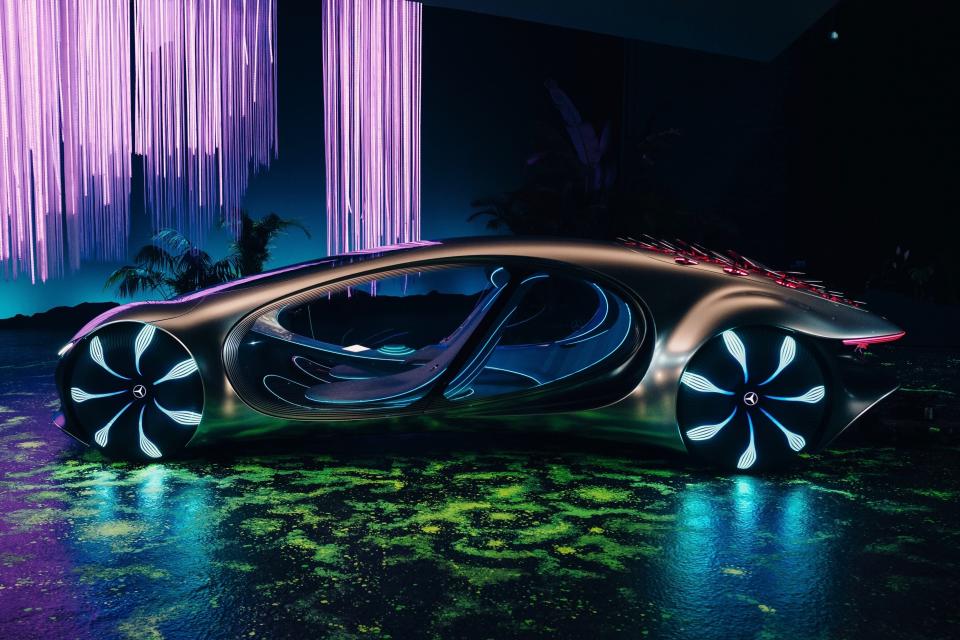
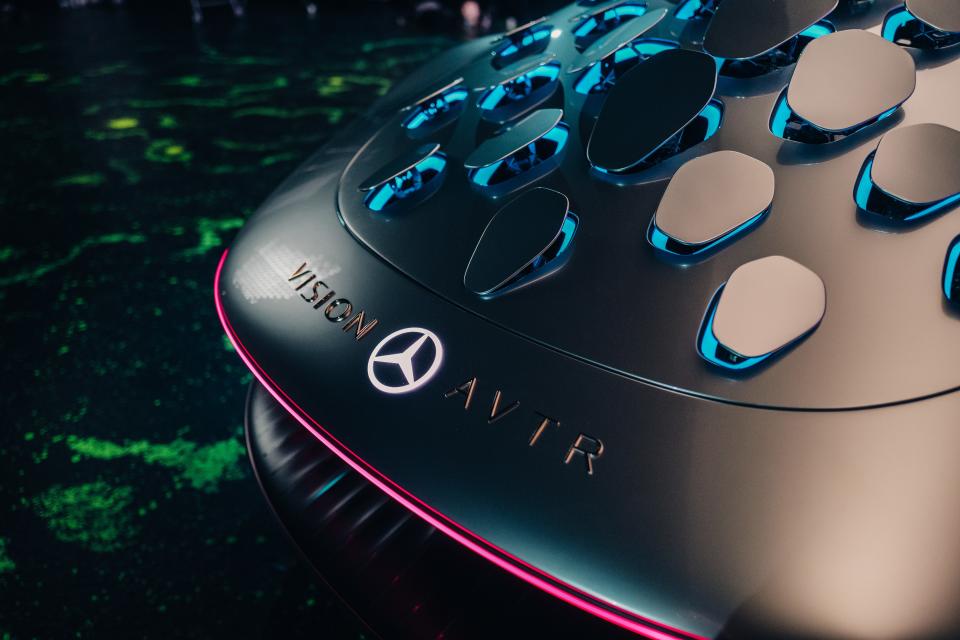
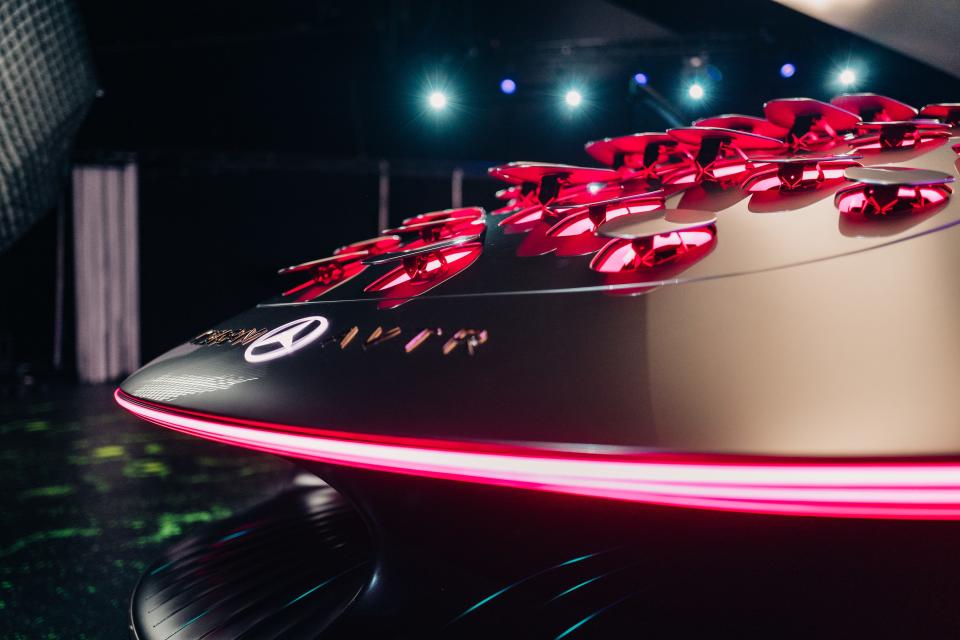
Moving beyond the distinct animal-cyborg aesthetics, the Vision AVTR also represents something bigger to Mercedes. Wagener explains the underlying intent as he gently instructs me in how to crouch and roll into the concept’s cocooning chaise lounges. “How can we make something that is in harmony with sustainability on one hand, but on the other hand also more in harmony with the human occupant? This is a creature, this is an intelligent vehicle. It’s like your friend, it takes care of you, you connect to it, like in Avatar.”
To that end, the concept has no steering wheel or traditional dashboard. Its exterior and interior flow into each other seamlessly, like a Möbius nautilus shell. Rather than anything so 2020s as gauges and screens, the car projects information onto surfaces throughout the cabin—including the driver’s hand, which can “grab” functions.
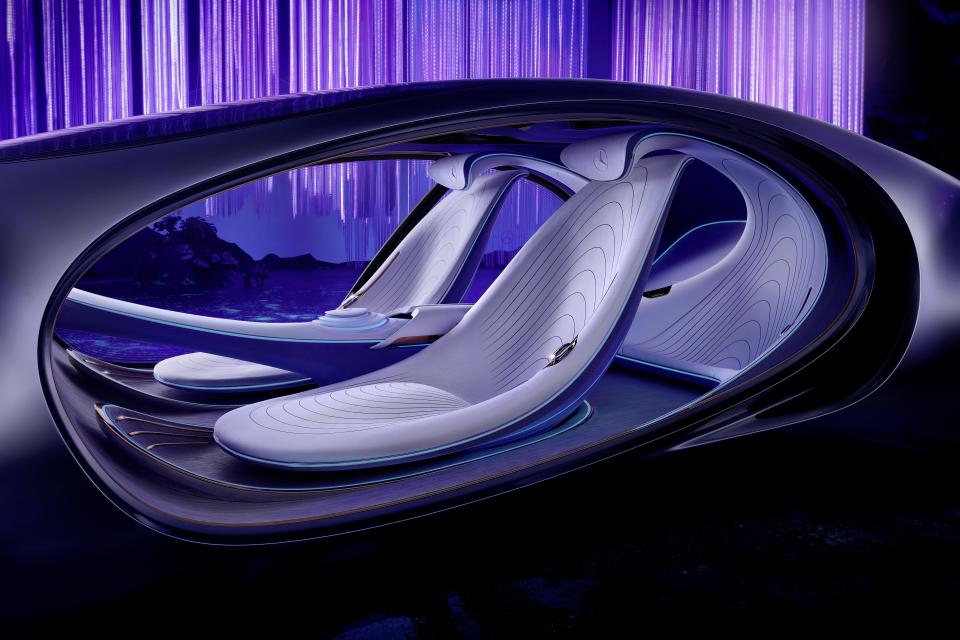
Inspiriert von der Zukunft: Das Mercedes-Benz VISION AVTR // Inspired by the future: The Mercedes-Benz VISION AVTR
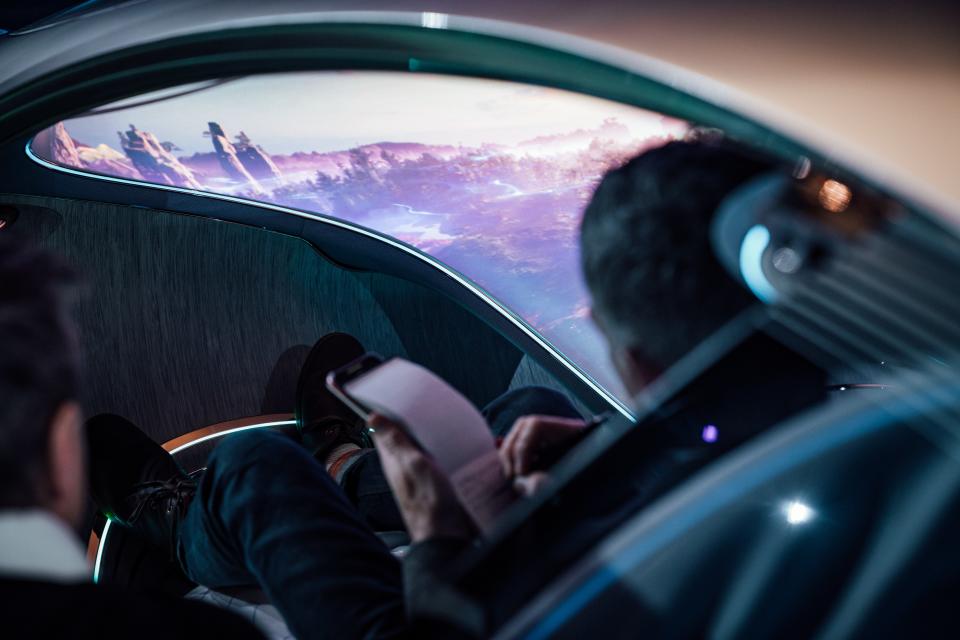
I jokingly ask Wagener where the “queue” is—the place where Pandorans plug their neuron-hairs into one another.
“We’re not actually plugging into the car, yet. I’m sorry about that,” Wagener jokes back. But then he moves my hand over a pulsing latex ziggurat that slowly rises from the console between the seats. This is beehive-shaped joystick controls the movement of the vehicle (which, as a concept, will not be made and will likely drive 40 feet in its life). “That’s the Merge Device,” Wagener says. “One of the most sensitive parts of your body is the palm of your hand, you rest it on the device and you have the most feeling in there.”
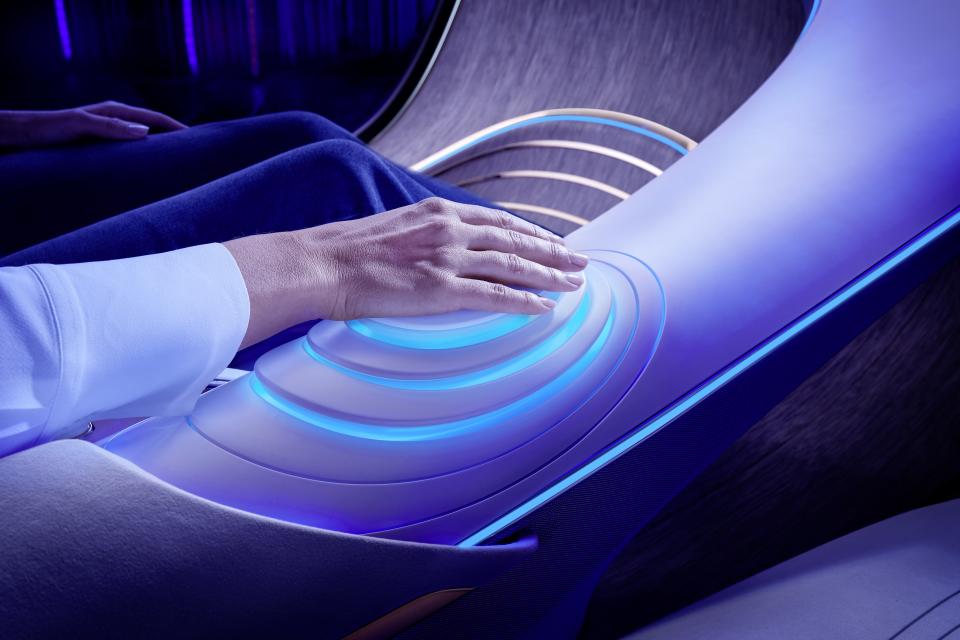
Inspiriert von der Zukunft: Das Mercedes-Benz VISION AVTR // Inspired by the future: The Mercedes-Benz VISION AVTR
Though the AVTR is meant to evoke the idea of a transportive pet with feelings, as a concept vehicle it’s real-world purpose is to demonstrate Mercedes-Benz’s vision for what comes next in cars. “The big idea is the move to a sustainable modern luxury,” Wagener says. “For us as a car brand, and the automotive category in general, to find new ways to get vehicles in harmony with nature, and environmentally friendly.”
He strokes the padded white dash, and explains that the “hide” covering it is a synthetic “leather” made of recycled plastics. Ditto the knubbly cloth door inserts, produced from old single-use plastic bottles. The wood-look floors are Karuun, a compressed composite made from cast off rattan palm vines. The rose gold-colored aluminum trim? Also recycled. The battery that powers the whole thing is semi-organic, its cell composed of graphene, and can be recycled.
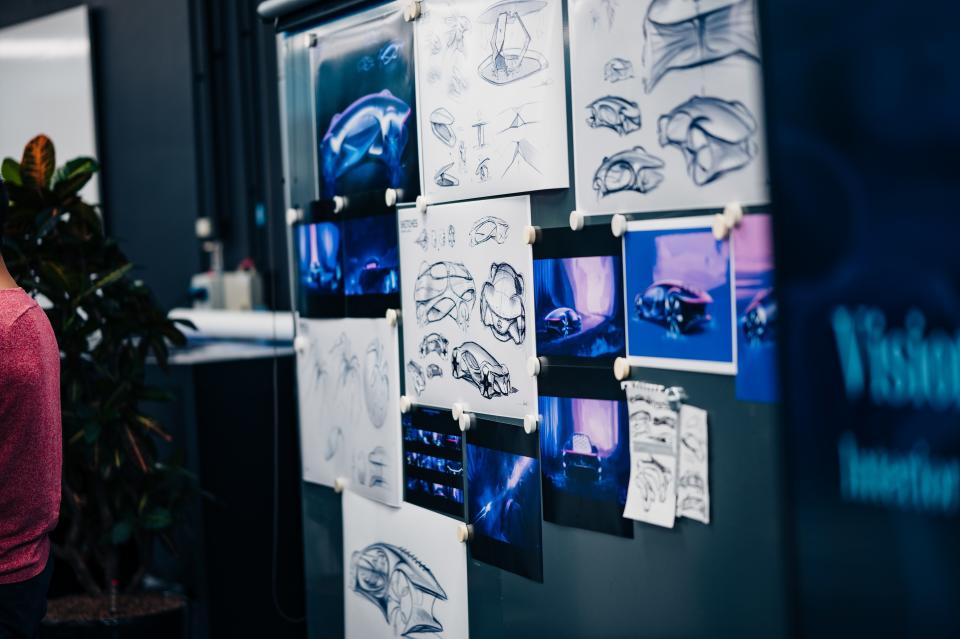
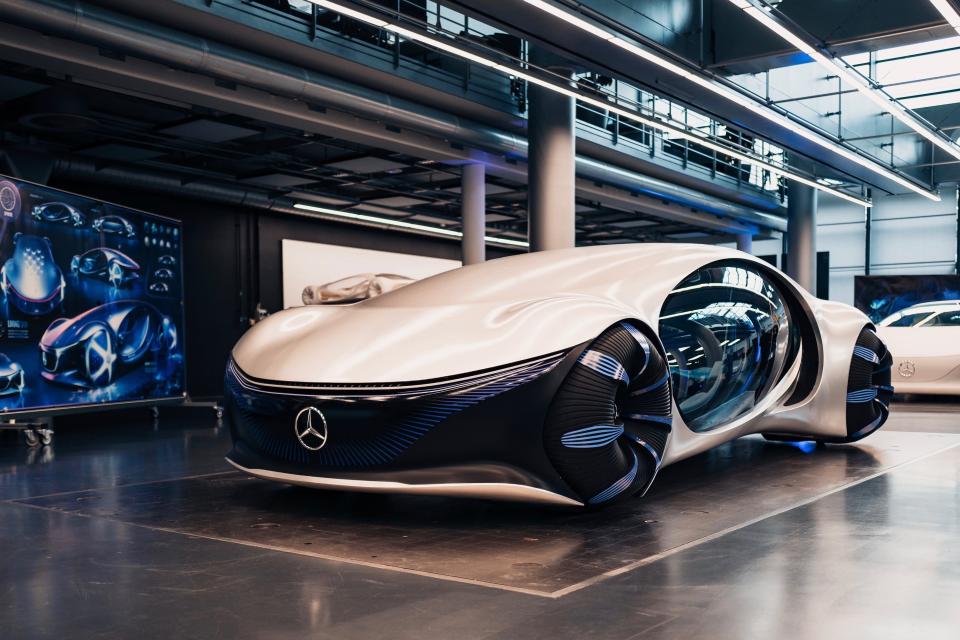
Beyond that, Wagener says that Mercedes-Benz just wanted to make something ambitious and cool. “The overall thing is simply to make a super spectacular statement,” he says. “A car that is from a science fiction movie that can drive on a different planet.”
He takes a step back and considers his creation. “I mean, some people are obviously dreaming about going to Mars,” he says, taking a dig at the Red Planet-colonizing ambitions of Elon Musk. “But we go to Pandora, which is even further.”
Though, technically you won’t see the Vision AVTR rolling through Pandora on its blobular wheels at all—the car won't be in Avatar 2 when the film’s released at the end of 2020.
“I mean, Pandora doesn’t have streets right? So it wouldn’t make sense,” says Wagener. “But it should look like it could drive there.”
The Ferrari Roma can run us over with…itself.
Originally Appeared on GQ


